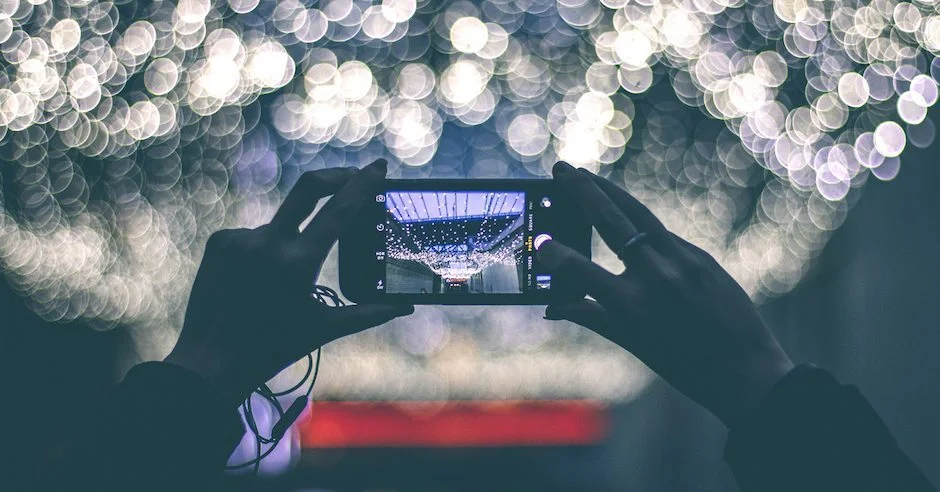One of the reasons social media marketing is such an effective tool is because it’s so measurable and transparent. Every interaction, engagement, share, comment, and other action taken on social media can be tracked and analyzed, and this provides digital marketers and brands with a wealth of invaluable insights about their audiences. It also allows them to accurately gauge the success of their social media marketing campaigns.
But what if everything that happened on social didn’t stay on social? Put another way, what if there were things that started on social media but were then removed from the realm of the platform, making them invisible to the watchful eyes of analytics programs?
The Basic Tenets of Dark Social
Dark social refers to online actions that can’t be tracked. The Atlantic’s Alexis Madrigal – who came up with the term dark social – describes it as ‘social traffic that is essentially invisible to most analytics programs'. It occurs when people come to a webpage by directly typing in a URL, using a bookmark, or clicking a link that lacks a referral tag (rather than clicking a link that can be traced). In other words, you’re in the dark when you try to figure out where the social traffic came from.
For instance, say your friend shares a news article on Facebook, and you decide you want to read it. You click the link and are redirected to the BBC’s website, and to that article specifically. If you were to examine the BBC’s site analytics, it would show that you were referred from Facebook.
But now let’s say that instead of sharing the article on Facebook, your friend instead copies the URL, pastes it into an email, and sends it to you. This link now lacks a referral tag. When you want to read the article, you click the link and are taken to the page. This time when you look at the BBC’s analytics, it will say the traffic was typed, direct, or bookmarked, which essentially means it doesn’t know where you came from.
Despite how much information you can garner from analytics, these platforms don’t see everything, such as that your friend’s email was the referral when you landed on that article. This is dark social, and if you don’t have a strategy in place to address it, then you’re missing a major piece of the puzzle.
Dark Social is an Opportunity to Build Brand Awareness and Boost Sales
The important thing to realize about dark social is that it represents word-of-mouth sharing among friends, families, and associates. Say, for example, that you’re on your lunch break, scrolling through your Facebook newsfeed, and come across a funny video. However, you only have a limited amount of time, and you’ve seen a hundred funny videos already this month, so you keep scrolling instead of watching it.
But now let’s say that instead of coming across the video in your newsfeed, your friend emails it to you with a note saying you’ll love it. This time, you watch the video. So what’s the difference? The referral is from a trusted source. Finally, let’s say that the funny video was actually a product video: there’s a much higher chance that you’ll convert after watching the video because dark social is essentially a word-of-mouth referral. Brands can take advantage of this to build awareness, increase conversions, and drive sales.
Incorporating Dark Social into Your Digital Marketing Strategy
Using dark social to drive brand awareness and sales requires some finesse because you’re imposing on your audience’s personal space. Remember that dark social represents private conversations among friends, family, and other people who know and trust each other, and you can’t just barge in on the discussion and expect people to listen.
The best way to leverage dark social, therefore, seems to be through influencers. The great thing about influencers is that people already recognize and trust them, so they can act as intermediaries between you and your audience. Micro-influencers may be your best bet because they have fewer followers and tend to communicate with them on a more personal level.
Once you get an influencer on board, you can ask that person to spread the word about a brand by sending links to your audience through apps, messaging apps, emails, and other platforms where dark social messages get shared. However, when creating content that’s designed to access dark social spaces, there are some best practices to keep in mind:
Create custom and personalized content for this purpose
Use content to engage in conversations
Avoid being overly promotional
Focus on interactive content that will encourage sharing
Emphasize the value you can provide rather than trying to sell
Dark social is a major issue that digital marketers have to face because too much web traffic out there is quietly lumped into the direct category. Without knowing your referral sources, it’s impossible to create a fully informed digital marketing campaign, and it leaves you open to spending marketing resources in the wrong places.
But dark social also provides an opportunity to connect with audiences on a more personal level, and the key is locating micro-influencers who can get your foot in the door. There are also things you can do to track your dark social numbers, and steps you can take to reduce the amount of traffic you can’t analyze.

